Categories
- animatronics (12)
- apple (11)
- arduino (179)
- art (41)
- articles (121)
- artificial intelligence (11)
- automation (421)
- avr (205)
- bitcoin (3)
- breadboard (9)
- cameras (57)
- cars (26)
- cell phones (28)
- clothing mods (21)
- console mods (26)
- dangerous (94)
- desktop mods (24)
- embedded (5)
- flying things (54)
- fpga (22)
- gaming creations (108)
- interface (225)
- internet (17)
- laptop mods (6)
- lasers (22)
- linux (7)
- magnetic (3)
- medical (12)
- microcontrollers (51)
- misc projects (152)
- msp (12)
- music (124)
- pic (90)
- projects (23)
- pyroedu (76)
- raspberry pi (26)
- robots (312)
- security (36)
- sensors (307)
- software (200)
- solar (19)
- stamp (9)
- tools (149)
- tutorials (98)
- Uncategorized (45)
- usb (44)
- wireless (256)
Sponsors

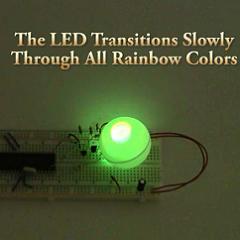
Posted February 9, 2012 by Chris
“A very popular type of LED that has finally come about is the tri-color, RGB LED. The RGB stands for: red, green and blue since the LED is capable of displaying all three colors, independently. This means that an RGB LED can display any color of the rainbow. This is a powerful capability, but it also requires more control. This tutorial explains how to display all the colors of the rainbow on a single RGB LED using a PIC 18F452 microcontroller.”

Posted February 8, 2012 by Chris
“About 10 times a minute the controller poles each of the three I2C temperature sensors (DS1721) for it’s current temperature. The sensors are the eight pin SMT IC’s on the back of the boards. There is one on the main circuit board. There are two more sensors on the smaller boards. One of the smaller boards is screwed into the incoming air vent and the other is screwed into the vent on a backup AC unit.”

Posted February 4, 2012 by Chris
“In order to move around without becoming stuck or damaged, a robot needs to monitor and respond to its environment. This ability is made possible by sensors triggering certain navigational responses. The sensor robot project has two challenges: You will add a front sensor that will keep the robot from bumping into walls and objects in its path and you will program the robot to execute an avoidance maneuver in response to each sensor.”

Posted January 15, 2012 by Chris
“This project enables your MCU to communicate in real time to a web browser. I started this project after seeing a similar implementation on hackaday from mbed.org. Their implementation uses their own device, the mbed Cortex-M0 beta. I’ve been a hobbyist microchip PIC developer for a few years, so I set out to write my own version for microchip’s 8bit pic devices in C. The microcontroller used is a microchip PIC18F4620.”
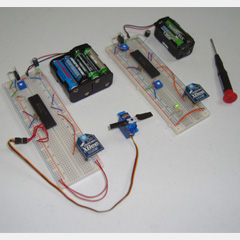
Posted December 22, 2011 by Chris
Today’s article shows you how to build a basic wireless input and output system in the form of a single transmitter and single receiver. Communication is one way to keep things simple with two xbee modules being used for the wireless link. In the end, a small trimpot will control the movement of a servo motor.

Posted December 11, 2011 by Chris
“The Picaxe 08m is a PIC chip with a pre-installed boot-loader that allows programming the chip via a serial port. This is similar to the way that the Arduino has an AVR chip with a pre-installed boot-loader. There’s also some software for the Picaxe for handling the programming, a bit like the Arduino IDE.”
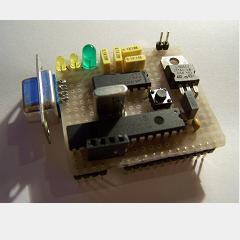
Posted December 9, 2011 by Chris
“This thing may remind you of an Arduino but it’s not, it’s not even an AVR but a dsPIC30F2012. Lots of times I want to try out something, but I’m too lazy to make the whole thing over and over on a breadboard so why not solder it together quick on a pref board so I can just stick it in.”
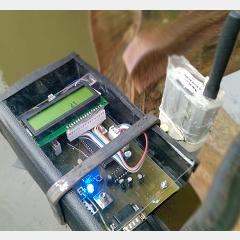
Posted December 3, 2011 by Chris
“The main purpose is to gather water level data, store it in central database and view it on a web interface. This system can greatly reduce the effect of sudden water level increases due to rain, causing floods. Also, it minimizes the man power requirement to measure water levels in the reservoirs in distant areas.”
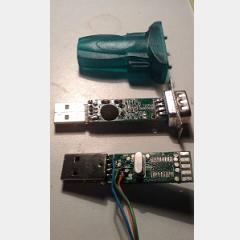
Posted October 29, 2011 by Chris
“This morning I decided its about time I learnt how to use the UART hardware in most PIC micro- controllers. I started off with a USB-RS-232 converter that I got for US$3 from DealExtreme.” A good look at how to hack a USB-to-Serial converter to mess around with a PIC’s UART module.
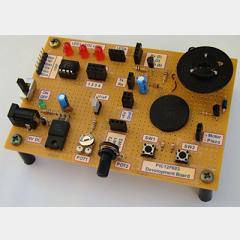
Posted October 21, 2011 by Chris
“Our purpose here is to explore the potential of PIC12F683 micro for which we need a development board. The good thing is we are going to make our own board. The schematic and the actual board that I have built are shown below. I soldered all the components on a 12 x 8 cm general purpose prototyping board. ”







